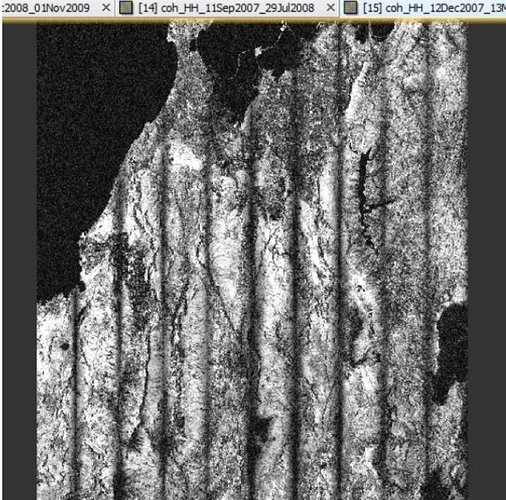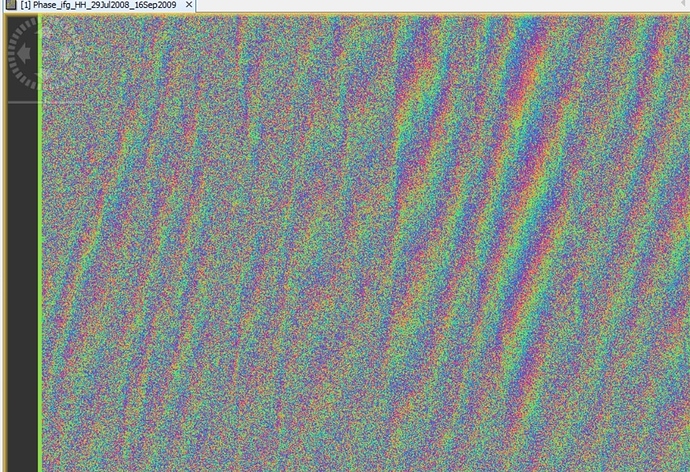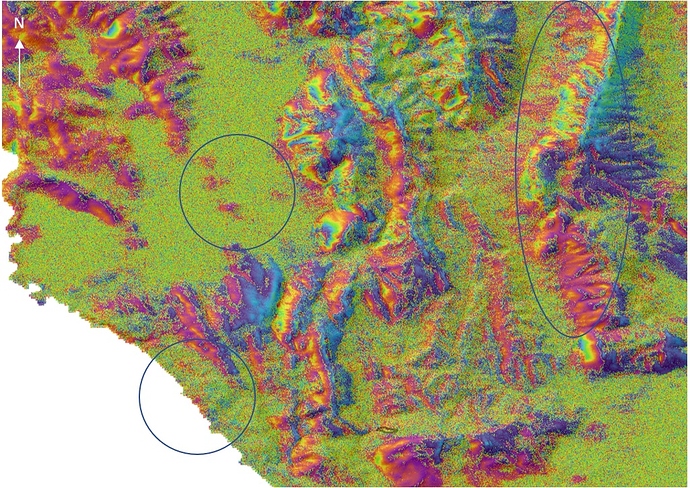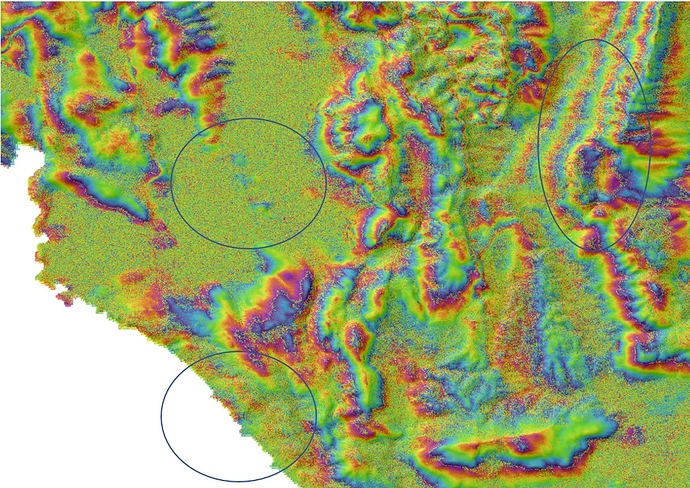Hello everyone!
I have several archived ALOS PALSAR SLC L1.1 scenes provided by ESA through EO-SSO. I want to perform DInSAR for (potential) landslide detection using SNAP 6.0.5 (intel core i7, 8th generation, RAM 16GB). Deskewing was not performed. Unfortunately, the number of image acquisitions available is limited (9 images) and I encounter problems with my processing.
First, due to coregistration issues I came up with coherence images characterized with vertical strips as the one presented below:
The problem was overcome when resampling method in the “CreateStack” tab was selected to none instead of bicubic as I read in the forum (Problems producing interferograms with ALOS). Does anybody have any idea why this might happened? What defines the resampling type?
In the “flat-earth phase removal” tab (interferogram formation), there are some parameters I am not sure I fully understand. Using default parameters (degree of flat earth polynomial:5, number of flat earth estimation points:501, orbit interpolation degree:3), there were systematic phase ramps in one interferogram spanning 1-year interval:
Then I read Problem with Using ALOS Data and I used the max parameters (degree of flat earth polynomial:8, number of flat earth estimation points:1001, orbit interpolation degree:5)
The interferogram did no more present the previous trend. Would it be then wrong to use these max parameters for every pair we process? Can we only change the “orbit interpolation degree” and leave the first two parameters as default? When/how do we know that interferometric results are reliable?
Is this “orbit interpolation degree” the same with the one defined in the “topographic phase removal” tab? Does it have to be the same in these two cases?
I would really appreciate receiving any feedback with reference to that, if available!
Another thing I would like to ask is related to FBS-FBD interferometry. If FBS-FBD is not supported by SNAP, should not processing between an FBS-FBD pair be interrupted instead of coming up with interferometric results that apparently are not reliable? In case FBS-FBD is supported please let me know.
Thank you in advance!




